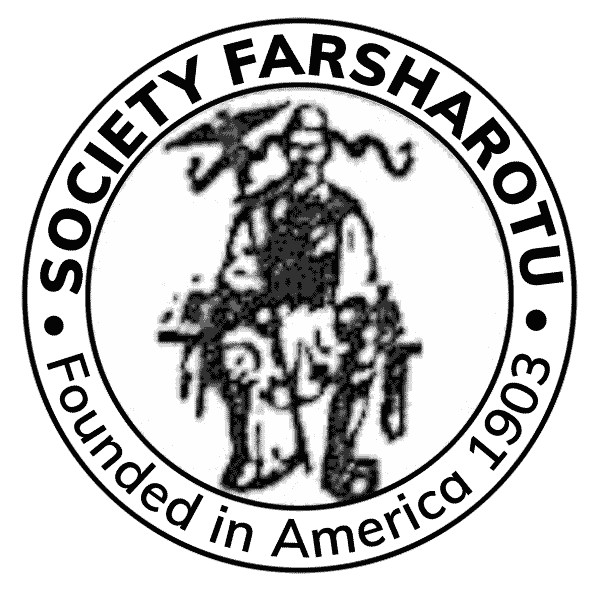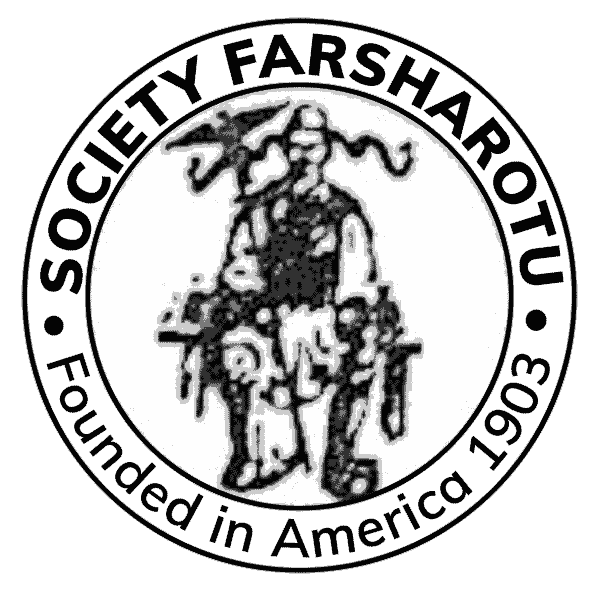Did You Know What What Other People Have to Say about Us?
“We lodged at an inn kept by a Vlah, who, as I was such a rare bird, most kindly invited me to visit his private house. And all his family in their best — the ladies dressed alla Turka — received me with great hospitality, and the very strongest rakia it has ever been my fate to sample. Marko [Ms. Durham’s guide] was quite happy here. The Albanian and the Vlah meet as brothers… The Vlah is believed by some to be the descendant of the Roman colonist and the original inhabitant.”
–Edith Durham, High Albania (London, 1909)
“The triumph of Vlach cooking however is Pita, which may be considered the Vlach national dish…All kinds of pita are good, but perhaps the best is that made with leeks, nettles or some similar vegetable. For some obscure reason this dish is practically confined to the Vlachs, and is rarely to be seen in any Greek village.”
–Wace & Thompson, The Nomads of the Balkans (New York, 1913)
“The speech of the Rumanians and of the Vlachs of the Balkans must spring from the same source. They are too alike for it to be otherwise; few of the Romance languages are so closely related and it is only surprising that the centuries and the distance which separates them have not prized them further apart. Until a hundred and fifty years ago, both groups were loosely called Vlachs, or Wallachs, by the rest of the world (but never by the Rumanians themselves), and this surely points to a common origin. Where? Outside Transylvania, the Hungarians say: they entered only as late immigrants; inside it, the Rumanians insist, only spreading south as later emigrants…it is at this point that an inexpert newcomer to the problem begins tentatively to wonder: could the answer not lie somewhere between the two?”
–Patrick Leigh Fermor, Between the Woods and the Water (New York, 1986)
“The failure of previous writers to give a clear and objective account of the Vlachs shows that there is a need for a new study of them, but also that such a study is extremely difficult…Under the Turkish empire the Vlachs were just one more subject race; in the nation states of Albania, Yugoslavia, Bulgaria and Greece they are a discouraged minority, and one needs more than the epic poet’s brazen heart if one is to investigate the Vlachs in sensitive border areas of these countries. The best hope for future investigators here could seem to be cooperation with native scholars working on the ground. Greece might seem to be the most promising area for investigation, although one must guard, especially in discussions of the Vlach language, against a Greek bias, if one considers only the Greek Vlachs.”
–Tom Winnifrith, The Vlachs: The History of a Balkan People (New York, 1987)
“The Vlachs are much more numerous than the Sarakatsans but less widespread; they played a prominent if minor part in Byzantine and Balkan history; they inhabit remarkable villages in the mountains and form the bulk of the population of several Macedonian and Thessalian towns; all this, with the difference of language and, some say, of race, from the rest of the Greeks, has been a fascinating anthill for linguists and ethnographers. For the last hundred and fifty years, unfortunately, they have been a theme of bitter political discord in the Balkans…Indeed, under scrutiny, their dissimilarity pierces any surface more and more sharply. Everything — manners, customs, clothes, folklore, beliefs, appearance, feeling and, above all, language — thrusts them further apart.”
–Patrick Leigh Fermor, Roumeli: Travels in Northern Greece (New York, 1966)
“There is an underside to the myth of the mountain man. The word Vlachos — both the ethnic label of many of Greece’s transhumant shepherds, and the simple occupational term for “shepherd” — holds a hint of scorn. It is the Greek equivalent to the term “hillbilly” and draws on the same imagery. Moreover, vlachos sounds almost like vlakos, “idiot,” and though Greek ears keenly distinguish chi‘s from kappa‘s, the phonic resemblance is gleefully savored. Vlachi — the lot of them — are the butt of countless jokes, which portray them as brawny but dull and silent.”
—Insight Travel Guide to Greece (Hong Kong, 1988)
“Most of the Illyrians and Celts were absorbed during the Slav migrations or fled to the mountain retreats. Some descendants who were not absorbed became the inhabitants of Albania. Others, who were Romanised but who never adopted the Slavonic language and traditions, were the Vlachs …whose descendants still live as nomadic herdsmen in the Macedonian mountains and in Rumania where many of them went. They take their flocks to the high pastures in summer and bring them down in winter. The Macedonians call them Vlasi and they have their own language, Vlashki (sometimes known as Armanesti). There is a fascinating legend that they are descended from the Vth Legion [of the Roman army] and as a result of this they are also known as Cincarski (pronounced sinsarski)… But when you actually find yourself looking at a Vlach shepherd, in his brown homespun cloak, walking along with a crooked pastoral staff at the heels of two hundred head of baaaing, tinkling sheep in the austere, spacious uplands of interior Macedonia, two millenia seem momentary.”
–J.A. Cuddon, A Companion Guide to Yugoslavia (New York, 1968)
“The language spoken by the Wallachs of Southern Turkey still differs little from that used in Rumania proper, save for a certain admixture of Greek words referring more particularly to modern civilized life. And within a year of the creation of the Principality of Roumania [1859], a propaganda was organized with the object of substituting the Roumanian for the Greek language in the churches and schools of their settlements south of the Danube. The leader of this movement was Mr. Apostolu Margaritu, a Macedonian Wallach educated at Bucharest, who, despite Greek opposition and intrigue, succeeded in many localities in exciting a na-tional feeling in his fellow-countrymen, whom he soon induced to employ Roumanian instead of Greek teachers in their schools. On the elevation of Roumania to a kingdom in 1877, this propaganda received a fresh impulse by the appointment of a Roumanian Consul-General at Salonica, which city immediately became the headquarters of an active rivalry between the two nationalities.”
–Lucy M.J. Garnett, Balkan Home-Life (New York, 1917)
“Some facts about Moskopole are worth mentioning since the pop-ulation of this city played a very important role in the his-tory of the Aromanians in Mace-donia. According to Weigand, at the turn of the XVII and XVIII centuries Moskopole reached its apogee: it had at least 60,000 inhabitants, it was surrounded by walls; it also had its own printing house (1740-1744), a famous “lyceum” (called “the New Academy”), etc., etc. No wonder that under these conditions the city became the center of Aromanian national-cultural revival and didactic literature. Here were born the three outstanding Aromanian writers: Constantin Ucuta, Theodor Cavallioti and Daniil Moscopoleanul… The destruction of Moskopole dispersed its inhabitants as refugees and emigrants all over Macedonia. The most important Aromanian communities of the XIX century in Serres, Salonika, Bitola, Krushevo, Trnovo, and Magarevo come from Moskopole.”
–Zbigniew Golab, The Aromanian Dialect of Krushevo (Skopje, 1984)
“Indeed, the Vlachs occupied the high country, land of refugees fleeing from foreign invaders or from the authority of empires, while the Slavs settled in the plains and along the middle and lower courses of rivers. The relationship between Vlachs and Slavs exposes a principle of human development, a kind of law of history: the conquerors occupy the most easily exploitable resources, the rebels withdraw to less hospitable lands, which offer them at least the advantage of preserving their freedom… Following the Slavic invasions, the Romanized plainsmen were forced into the mountains and the Slavs occupied the plains. As a result of the Ottoman conquest, many Slav peasants abandoned the plains to join the Vlach folk of the mountains, and the plains came into the possession of the Turks and Moslem Albanians.”
–Traian Stoianovich, A Study in Balkan Civilization (New York, 1967)


Responses